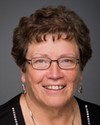Thank you, Madam Chair, and members of the committee.
A recognition of the Algonquin Nation and of all Canadians.... Of all Canadians when they sing “O, Canada, we stand on guard for thee”, they're called back to the central values of our nation, the principles of justice, of fairness, of freedom, and of equality. And they are called there particularly when they go home at night and see the eyes of their own children, knowing that if there ever is a generation that deserves the full enjoyment of those values, it's a country's children.
Economic development theory and practice has told us that a thriving nation can be measured if there's a thriving generation of children, that as a government, the most important economic stimulus that you can provide is investing a dollar in a child. As the World Health Organization has said time and time again, for every dollar invested in a child, a government can expect to save $7 down the line. This $7 can be available for things such as building roads, for health care, for an aging generation, for pensions, for all caring Canadians and citizens to ensure mental health practices. All of those things can be in place. Fail to spend the dollar on the child, look at the child as a way to save money, and you'll still spend those remaining dollars but you'll spend it on prisons, mental health care, and welfare payments.
Just a number of weeks ago, I was reading a report and there's a phrase in there that says:
Let someone hazard a guess as to what year or what century real progress will be made in the equality of [First nations] children.
It was written in 1967. I was three years old.
Successive governments have known about the inequalities of first nations children on reserve in education, child welfare, and other services. Some investments have been made but they fall far short of equality. As the Auditor General found in 2004, and again in 2011, in education, the investments are short. Your own first nations panel on elementary and secondary education found that investments are immediately required to bring first nations students up to the same standard that all other Canadian children enjoy. The Auditor General in 2008, and again in 2011, and the Parliamentary Budget Officer in 2009 found that these same inequalities echo across child welfare.
So how does this inequality happen? Well, as you know, parliamentarians, provincial and territorial laws, child welfare, education, and health all apply on reserves but the federal government is to fund them. As the Auditor General has repeatedly found, the federal government does so to a lesser level than all other Canadians enjoy. This happens across multiple experiences in childhood, and it weighs on the hopes and dreams and potential of a whole generation of first nations children.
The good news is that there's something we can do about it; we need not leave things the way they are. You have the power amongst you to make a strong departure from the parliamentarians who have preceded you and decide that racial discrimination against children is not a legitimate fiscal restraint measure; to decide that there's no room within the Canadian consciousness for a child to be left on the sidelines because of their race; to know that every child should grow up in this country having the same opportunity to start the race on the same values; to know that the Government of Canada as represented by all parties is prepared to truly put children first.
Some people might wonder why these inequalities have gone on for so long. I think it's because in a busy legislative office it's sometimes easy to forget whom it impacts. I'd like to share with you a story of Shannen Koostachin. Shannen Koostachin was born in the year of 2000 in the Attawapiskat First Nation. She was an excited little girl, like any other kindergarten kid, and wanted to go to school. But the only school in her community was closed because it sat on top of 30,000 gallons of diesel fuel. Over three ministers of Indian Affairs across two political parties promised Shannen and her friends a school and didn't deliver. Instead they went to portable trailers set beside the toxic waste dump, separated from it by only a chain link fence. The trailers deteriorated so much that there often wasn't heat in the portables, and mice would eat their sandwiches. There's no money for a library, no money for computers, no money for proper teachers, and no funding for a science lab.
When grade eight came, she believed in the goodness of each and every one of you. She thought the reason you didn't provide her and other first nations children with a proper school and equitable funding for education wasn't that you were bad people. It must be, she thought, because you didn't know how bad it was, that when you heard the statistics about the underfunding of first nations education, you would think it's almost beyond belief in a wealthy country like ours.
So, she organized non-aboriginal and first nations children to send you letters to say this is what it's like: “We're worried about not growing up and getting a proper education, because we want to get jobs, we want to make a contribution to our families and our communities. We know if we don't get that education, we're really going to suffer.” Some of those letters from Canada's children to parliamentarians are in the Our Dreams Matter Too report that's before you.
Shannen was true to her word. She did everything she could to fight for proper education for first nations children, including meeting with the Minister of Indian Affairs and asking for a new school. As many of you know, that request was declined on the basis of there apparently not being enough funding in the Government of Canada to provide a school at that time.
Shannen Koostachin went on to speak to anyone who would listen. She was one of 45 children in the world to be nominated for the International Children's Peace Prize given out by the Nobel laureates. She should be one of our true Canadian heroes. But sadly, it wasn't too long after her 15th birthday, living hundreds of miles away from her family so she could get the quality of education all of you received, that she died in a car accident, never having been treated equally by the Government of Canada. She would have graduated this year.
I will be giving an address at the University of Northern British Columbia, where I'll be receiving an honorary doctorate in law degree. I will dedicate it to Shannen Koostachin for the graduation she was never able to attend. Shannen had wanted to grow up to be a lawyer.
What about child welfare? There are more first nations kids in child welfare today than there were at the height of residential schools. They are driven there by poverty, poor housing, and substance misuse, all factors that we could do something about. As the Auditor General has found, there is underfunding of child welfare services on reserve. Has the federal government made some investments? Yes, but they're at a standard we read about in the Sims report. If investments continue at this very slow pace, it's not unreasonable to think that it will be another 45 years before we will be re-reading this report and wondering why equality didn't happen in child welfare.
Instead, in 2007, along with the Assembly of First Nations, we filed an action in the Federal Court against the Government of Canada alleging that the Government of Canada was racially discriminating against children by underfunding child services on reserve. I tell many people that the day I filed that complaint against the Government of Canada was one of the saddest of my life. I could not believe that in a country that I loved so much this was even necessary.
Over the next five years, the Government of Canada tried to derail a hearing on the merits—not on the facts, not on the substantive question of whether racial discrimination was happening. I think you can agree with me that if confronted with that allegation, if the Canadian government as a whole were innocent, then it should put its cards face-up on the table and let's have the debate. Instead it is pursuing a bunch of legal loopholes. One is that you can't compare, it says, federal services to provincial services. I'm very grateful to say that just a couple of weeks ago, the Federal Court rejected that argument and ordered a full hearing on the facts at the Canadian Human Rights Tribunal.
Ladies and gentlemen, I don't even think that a hearing is necessary. It would not be necessary if all parliamentarians across all parties decided that today was the day that first nations children would get a chance, that today was the day that first nations children would no longer stand at the sidelines of the country getting less because of who they are, that today was the day we recognized the 700% return of investing a dollar in a child and receiving seven dollars down the line.
There are other questions about best practices and research. The good news is that we know what many of these are, but without the financial dollars to put them in place, they're nothing but spirits in the wind.
As we know from Shannen's experience, there are thousands of Shannens out there right now. Do any of us around this table want to see another graduation day go by where a child who should really be there is somewhere in the spirit world looking down and hoping that we'll do the right thing?
Thank you very much.







